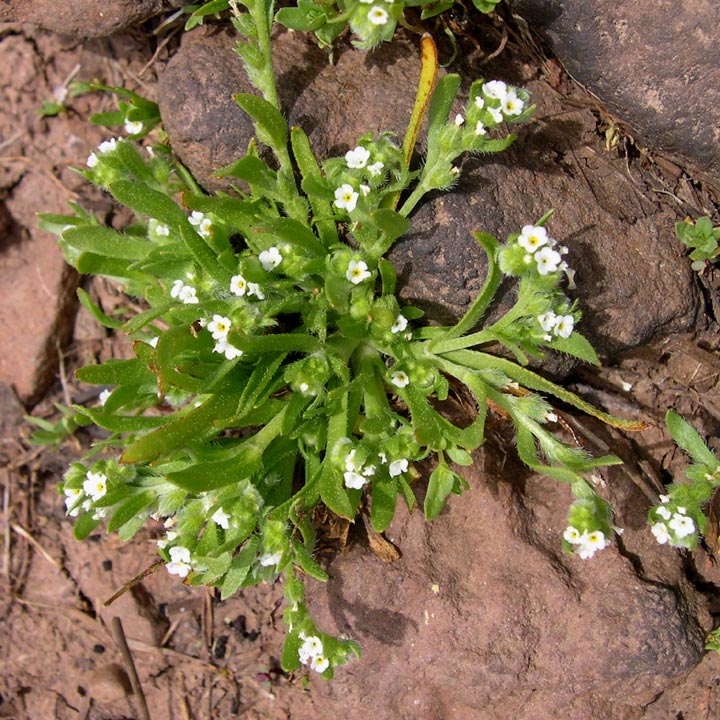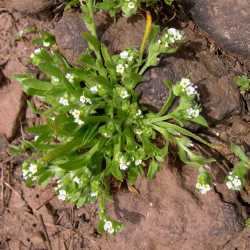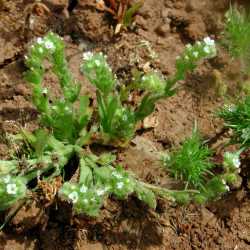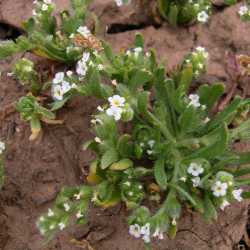General: Annual, 5-25 cm tall; stems prostrate to ascending or spreading, branched from the base, strigose.
Leaves: Mostly cauline, lower 1-4 pairs opposite, upper alternate, simple, linear to narrowly oblanceolate, mostly 2-7 cm long, up to 5 mm wide, surfaces strigose, margins entire; blades sessile.
Flowers: Inflorescence of several panicle-like cymes; pedicels glabrous; calyx 4-6 mm long, divided to about the middle, the lobes not fringed with hairs; corolla tubular- funnelform, about 15 mm long, blue or occasionally partially white; flowers March-June.
Fruits: Nutlets usually 4, ovate to lance-ovate, 1.5-2 mm long, the surface variously roughened, with or without bristle- like projections.
Ecology: Wet, often poorly drained soils in pine forests; 2100- 2400 m (7000-8000 ft); Coconino and Yavapai counties; western Canada, western and southwestern U.S.
Notes: na
Editor: Springer et al. 2008
. Slender annual with several or many prostrate or ascending stems to 20 cm; lvs essentially all cauline, linear, to 6 cm נ5 mm, the lower 1-4 pairs opposite; stems terminating in an elongate, loosely fld false raceme or spike that may be irregularly bracteate below; cal 2-4 mm in fr; cor small, the limb mostly 1-2 mm wide; nutlets ovate or lance-ovate, 1.5-2.2 mm, usually roughened, with a small, basilateral scar; 2n=54. Widespread in w. U.S. and Can., casually intr. here and there in our range. May-Aug. Ours is var. penicillatus (Greene) Cronquist.
Gleason, Henry A. & Cronquist, Arthur J. 1991. Manual of vascular plants of northeastern United States and adjacent Canada. lxxv + 910 pp.
©The New York Botanical Garden. All rights reserved. Used by permission.






